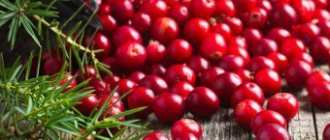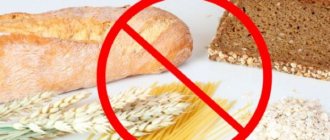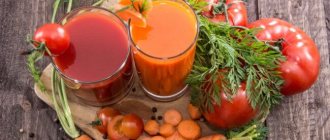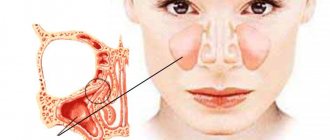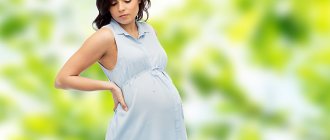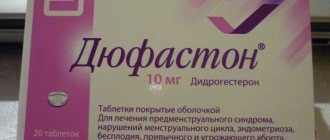The most harmful products: Unsplash The most harmful products in the world attract people with their taste. However, they contain many substances that are hazardous to the body and definitely do not contribute to human health. The top 10 most unhealthy foods are chips.
What are the most harmful foods in the world? Foods such as chips, instant noodles, hot dogs, burgers, soda water, popcorn, sugary cereals, juices, sausages, white bread and frozen processed foods can adversely affect human health.
Chips
Why are chips harmful? Of course, a small amount of homemade potato chips will not cause any significant damage to your health. But regular consumption of industrially produced snacks carries many risks for the human body.
Chips: Unsplash
In the best case, the product will contain no more than 40–50% potato base. Most of the chips will be potato starch and flour. And in order to make the taste even more attractive, a huge amount of flavor enhancers, flavors and preservatives are added to them. Therefore, Dr. Carol DerSarkissian, MD, classifies chips as one of the worst foods for the heart.
It is not good
In fact, foreign corporations often play with quality. But our manufacturers are not always at their best. Therefore, regardless of the country of origin, it is important to understand what we are going to put first on the plate and then in the mouth.
Last year, at the world's largest health promotion forum in Helsinki, WHO chief Margaret Chan said that “efforts to prevent noncommunicable diseases often conflict with the business interests of powerful companies, and this is one of the biggest challenges facing the system.” health care." We are talking not only about tobacco companies, but also about corporations producing, for example, soda drinks and alcohol. “Economic giants do not tolerate any kind of regulation and are trying with all their might to resist good intentions. They bribe legislators by lobbying their interests, mislead consumers by paying for deliberately false “research,” and go to court to defend their “rights,” WHO representatives say. Experts from this organization have compiled a list of the most harmful food products. Almost all of them are produced on an industrial scale.
1. Chips and fries
Potatoes fried in boiling oil until crispy are, let’s not argue, delicious. But, alas, it is not healthy. If you pamper yourself with it often, a heavy dose of carbohydrates and fats inevitably leads to weight gain. A standard serving of French fries in a fast food restaurant contains about 400 kilocalories (the daily requirement for a city person is about 2000), so there is an excess of calories. But this is the least negative. Overheated oil (and in restaurants, potatoes are fried in the same portion of fat for who knows how long batch after batch) accumulates carcinogenic substances. The national habit, widespread in some regions, of repeatedly frying meat and potatoes in the same frying pan, using the remnants of the previous portion of fat, is one of the main reasons for the high incidence of stomach cancer in the southern regions of Russia, Ukraine, Belarus, and Poland. Porous cast iron “absorbs” burnt fat and “releases” carcinogens to food during cooking.
As for chips, the original recipe, which turned 160 years old last year—transparent “slices” of potatoes fried in oil until crisp—has not been followed for a long time. Chips are “spanked” from “dough”, which is prepared from starch, flour and a full range of flavoring and nutritional additives. The salt content exceeds all imaginable standards, plus flavorings with the “taste” of bacon, onions, sour cream and even (!) “fried potatoes.”
Monosodium glutamate E-621, especially beloved by manufacturers, enhances the taste of any dish. At the same time, although the substance is not among the prohibited, experts recommend avoiding it. Firstly, you can get used to the rich, bright taste, and then ordinary food without enhancers seems bland and tasteless. Secondly, E-621 negatively affects the human nervous system.
2. Burgers, hot dogs, sausages
Once upon a time, a pathologist I knew looked through a microscope at a section of an ordinary boiled sausage. According to him, he did not see muscle fibers, but saw shredded connective tissue and... something that he identified as swollen toilet paper. Even if this is a joke, in any case you can’t look into the meat grinder of every manufacturer. Even if the sausage does not contain the much-loved and frequently used soybean, there is definitely so-called “hidden” fat. So such products themselves are high in calories, and after frying using the same oil, they actually represent an energy “bomb”.
3. Canned food
This is, in essence, a dead product. Of course, in exceptional cases, a can of canned meat can save you from hunger, but in everyday life, the less canned food, the better. The composition contains the same preservatives, flavoring additives, sugar, and a huge salt content. The daily requirement of a healthy person for NaCl is no more than 6-10 grams. Hypertensive patients and people with kidney problems have even less. But a 100-gram can of canned meat or fish is eaten “at a time” and contains up to 15 grams of salt.
4. Soups, noodles, instant purees
| The most harmful foods |
Soups from bags, quickly “brewed” “curly” noodles, mashed potato flakes - all this is ersatz food. No matter what the manufacturer writes on the packaging - chicken, shrimp, mushrooms, beef - there are no real products inside. And there is a “cocktail” of salt, the same monosodium glutamate. Such food is addictive, but there is no benefit from it.
5. Mayonnaise, ketchup
Once, during a business trip to Italy, one of our group of journalists risked asking for ketchup with traditional pasta in a restaurant. The waiter was speechless. He was clearly shocked and offended. And he was right. Because “industrial” sauces, which are always used to flavor fast food, only add “empty” calories and “chemicals” to them. In addition to starch, thickeners, ketchup contains dyes and the lion's share of sugar. Mayonnaise contains trans fats. It is these substances that enter the body regularly that lead to metabolic disorders, oncogenesis, and worsen immunity.
6. Chocolate bars, chewing candies
A candy made from high-quality chocolate (without palm oil additives) is both pleasure and benefit. But the “oversized” bars that we are so persistently encouraged to satisfy our hunger with are too much. The norm of sugar for a healthy person is 50 grams per day. This takes into account the “hidden” sugar in the same sauces or even seemingly unsweetened cookies. One bar at a time “eats” our daily sugar intake. As for “colored” candies - caramel, marmalade, chewing - here, in addition to sugar, chemical flavors and dyes are added, as evidenced by the inscription “taste and aroma are identical to natural.”
7. Sweet sodas and juices
These drinks are also loaded with sugar. One liter of Coke, Pepsi, and Fanta contains 110 grams of sugar and 420 calories. Together with the eaten burger - half the daily requirement. But other components of the “unique” recipe of popular drinks raise many questions. Caffeine in high doses is harmful to blood vessels. Phosphoric acid removes calcium from the body. Recently, both world leaders in soda production announced that they were removing the flavor stabilizer, brominated oil, from their formulation. This was achieved by consumer communities in the United States, which collected hundreds of thousands of signatures on letters of protest. And even earlier, there was a scandal with 4-methylimidazole, which gives drinks a “delicious” brown color. It was included in the list of carcinogens, and consumers sounded the alarm. However, the FDA stated that the dye is used in such minute concentrations that you would need to drink hundreds of cans every day to “eat” a dangerous amount of it.
Light sodas do not contain sugar and are promoted as low-calorie drinks. But the sweeteners they contain can hardly be considered safe either. Aspartame, for example, breaks down into toxic formaldehyde, methanol and phenylalanine. It is no coincidence that Rospotrebnadzor banned giving cola to children in summer camps and schools. As for “boxed” juices, buyers are much more loyal to them than to sodas. And in vain. Juices “reconstituted” from concentrates contain large amounts of citric acid and sugar—about six to seven teaspoons per glass. The fact that juices stand quietly in an open container for several days without changing their taste also speaks for itself.
Competently
Alexander Baturin, Deputy Director of the Institute of Nutrition of the Russian Academy of Medical Sciences:
— If we talk about food, let's remember the saying: “You can eat nails with mayonnaise.” In fact, what is the famous Big Mac? Well, bun. Regular, fresh. Plus a cutlet or a piece of chicken. Nothing special either. A few lettuce leaves, maybe a slice of cheese. But all this is flavored with different sauces - the same mayonnaise, cheese sauce, and very generously. And all these sauces are high in fat and very high in calories. And here the buyer has nowhere to go. And if he also washes it all down with sweet soda, the sugar content of which reaches 12%, and besides, he takes not a small glass, but a half-liter tub, then in the end the person receives a bundle of energy, a kind of calorie “bomb”. And the excess of these calories will certainly settle in the body - first grams, then kilograms.
So no matter how much we would like the opposite, rich, high-calorie food is a direct path to metabolic disorders, obesity and all related diseases - from cardiovascular disorders to diabetes and so on.
There's probably nothing wrong with occasionally treating yourself to your favorite food. But just occasionally. And regular poor nutrition will definitely lead to deterioration of health.
Instant vermicelli
What is the harm from instant noodles? These dishes attract not only their taste, but also their ease of preparation. Just pour boiling water over the noodles and leave for a couple of minutes without dirtying mountains of dishes. The product is based on flour, water and dried vegetables. It looks harmless, however, in addition to these three ingredients, the product contains a lot of salt, sugar and spices, which in such quantities are not beneficial.
Instant noodles: Unsplash
Instant noodles contain many nutritional additives. Along with noodles, you can “feast” on sodium benzoate (E 211), which causes or intensifies allergic reactions in the body. It also contains dyes and stabilizers. And the taste brightness of the product is added by the taste enhancer monosodium glutamate, which is addictive.
What makes food unhealthy?
Many people often think that healthy and unhealthy food is determined depending on how many calories the product contains. Of course, this statement should not be considered true. The only danger of eating high-calorie foods is excess weight. Other health complications arise not only from high-calorie foods.
There are a number of products, the consumption of which must be limited to a minimum, because they contain many substances and compounds harmful to the body. For example, nutritionists note that first of all, various surrogates should be excluded from the daily diet. They are found in store-bought dressings for dishes, in unnatural yoghurts, mayonnaise, processed cheese and other products.
Manufacturers often position their products as natural, but if you look closely at the composition, you will discover many carcinogens, trans fats, modified fats and other harmful additives designed to make our food tastier.
Hot dogs and burgers
Why are hot dogs and burgers harmful? Fast food restaurants and street fast food stalls, thanks to skillful marketing and flavoring additives, attract both children and adults with their products. The main danger of hot dogs and burgers is not the presence of large amounts of fat and salt, but phthalates. These chemical toxins are used in food packaging and leave a residue on the food.
Hot dogs and burgers: Unsplash
Research conducted by Ami R. Zota has confirmed a link between recent consumption of fast food and increased levels of phthalates in the human body. Experimental studies in animals indicate that these toxins have endocrine disrupting properties due to their effects on the male reproductive system.
Is fast food as dangerous as cigarettes?
In Russia, between a quarter and one third of adults fall into the category of obese. A staggering two-thirds of Americans are overweight, and poor diet is largely to blame. Last year, the UN special rapporteur on the right to food, Olivier de Schutter, said that “obesity is a greater global health threat than tobacco use” and that it is not taken as seriously as it should be.
His remarks were made at the opening of the 2014 World Health Organization annual summit. De Schutter ultimately wants countries to join forces and set stricter regulations on junk food: 9
“Just as the world has come together to manage the risks posed by tobacco, a bold framework convention on adequate nutrition must now be agreed upon,” he said.
“The Special Rapporteur has previously advocated for stronger government action on junk food, including taxing junk food, regulating fats and sugars, cracking down on junk food advertising and rethinking farm subsidies that make junk food cheaper,” notes Time magazine.
“Governments have focused on increasing the availability of calories,” he said, “but they have often been indifferent to what calories are offered, at what price, to whom they are available and how they are marketed.”
The idea that excess weight could be more harmful than smoking is likely to be objectionable to many, given how "normal" it has become to carry around extra pounds, but in terms of overall health impact and subsequent healthcare costs, it is. probably true. For example, data collected from more than 60,000 Canadians shows that obesity leads to more doctor visits than smoking. 10
Additionally, according to a McKinsey Global Institute report, the global cost of obesity is now $2 trillion per year, which is almost as much as the global cost of smoking ($2.1 trillion) and gun violence (including wars and terrorism, which also have a global value of $2.1 trillion). eleven
By comparison, alcoholism costs $1.4 trillion a year, traffic accidents cost $700 billion, and unsafe sex costs $300 billion. Moreover, if current trends continue, a McKinsey report estimates that nearly half of the world's adults will be overweight or obese by 2030.
Sparkling water
What is the harm from sparkling water? The main harm lies in excessive amounts of sugar, as well as a number of dyes and dangerous substances.
Even those drinks that are called diet drinks are not. Artificial sugar and dyes will only harm your figure. In addition, most sodas contain the artificial sweetener aspartame, which, according to research by Jennifer L. Cook, increases blood glucose levels and overloads the liver.
Soda: Unsplash
The best alternative to any drink is a glass of plain water. However, if you are tired of the good old H₂O, you can drink tea or a drink prepared at home.
Healthy eating: rules and recommendations
So, let’s repeat: healthy eating is a healthy lifestyle , therefore:
- Food should be complete and as varied as possible. Our body needs different microelements and vitamins. They cannot be contained in just one product. The richer your menu, the more benefits.
- Follow your diet. It is important to develop the habit of eating at approximately the same time. Main meals: breakfast, lunch and dinner. It is worth adding two snacks to them.
- Don't skip meals. This has several unacceptable consequences. Firstly, the feeling of hunger. It will make you eat a lot more later. Secondly, the body will become exhausted. As a result, you will get tired faster. Thirdly, this can disrupt the digestive processes.
- Minimize your sugar and salt intake. There is hardly a person who does not know about the dangers of sugar and salt. At the same time, many continue to get carried away with them. A large number of these products leads to a strong blow to health. Don't get carried away with them.
- Add whole grain products to your diet. This is bran, wholemeal flour, and many cereals. They are a useful exercise for the stomach and a storehouse of vitamins.
- Eat fresh vegetables and fruits as often as possible. Ideally every day. They are sources of minerals, vitamins and nutrients.
- Eat fish. At least once a week. Omega-3 acid is especially useful. It is found mainly in fatty fish.
- Minimize your intake of unhealthy fats, especially animal fats. They hit the digestive system very hard.
- Drink water. Clean, without gas. We advise you to calculate your individual daily intake. Mobile apps can help with this. For example, WaterBalance, Hydro and others.
- Forget fast food. These are extra pounds, heaviness in the stomach and a bad mood.
As you can see, eating right does not mean limiting yourself. On the contrary, your diet will become much wider. Healthy eating is not a diet at all! You won't go hungry or be under constant stress. Try it, and you will soon understand that eating the right food is really healthy.
Popcorn
Why is popcorn harmful? There is nothing harmful in corn itself. And properly prepared popcorn can even be beneficial when consumed in small quantities. However, the constant attribute of watching films in cinemas, which is prepared for mass consumption on an industrial scale, has nothing to do with healthy eating.
Popcorn: Unsplash
The main problem with making popcorn is using a lot of salt and sugar. In addition, popcorn is a very high-calorie product (about 400 kcal per 100 g) and contributes to the formation of fatty plaques. And a bucket of salted popcorn, eaten at once, can also harm the body’s water balance.
Meal planning is the key to success
Eliminating processed foods requires you to plan your meals ahead of time, but if you take it step by step, it is entirely possible and doable to painlessly remove processed foods from your diet. You can try looking for seasonal produce at local farmers' markets that are on sale and plan your meals accordingly, but you can also use the same to sell at supermarkets.
Typically, you can meal plan for a week at a time, making sure you have all the ingredients you need on hand, and then do any prep work you can ahead of time so that dinner is easy to prepare if you're short on time (and you can use the leftovers for lunch the next day).
Finally, if you are an emotional eater, I highly recommend using Emotional Freedom Technique (EFT). EFT is simple and effective and can quickly help you overcome food cravings naturally.
Sweet cereal
What's the harm from sugary cereals? They are considered an element of a healthy diet and are supposedly good for breakfast, especially children's breakfast. This misconception is caused by successful marketing and the fact that when preparing the dish, milk is poured over it.
The main danger of such cereals is the huge amount of sugar. According to Clara R. Freeman, excessive sugar consumption (more than 25-50 grams in all foods) leads to serious health problems.
Sweet cereal: Unsplash
Introducing cereal into the diet on a regular basis can harm a person, because the consumption of such amounts of sugar exceeds the body's needs for fast carbohydrates. This can lead to obesity, diabetes or cardiovascular problems.
Oatmeal
Oatmeal has long become one of the symbols of healthy eating. But when choosing the right packaging in the store, it’s easy to confuse whole oat flakes with instant cereals. But experts recommend treating them with caution. Due to rapid absorption, such porridge can lead to metabolic disorders in the body, explained Evgeny Arzamastsev.
Toxic topic: how to avoid poisoning from home-canned food
Doctors remind about the deadly danger of homemade pickles
— There are oatmeal flakes, and there is whole oatmeal. “Oatmeal is a product that is processed as quickly as possible,” he recalled.
However, not all is well with eating whole grains. Thus, an excess of plant fibers can have a bad effect on the intestinal microflora. It is not recommended to indulge in such products for elderly people, people with open stomach ulcers, as well as those who experience difficulties with digestion.
Juices
What is the harm from juices? Their main danger lies in eating fruits without fiber and high in sugar. Due to the lack of fiber, fructose is immediately absorbed by the body, raising blood sugar levels. When consuming fruits from which juice has been squeezed, the body spends time digesting the fiber, so the sugar comes in gradually.
Juices: Unsplash
One glass of juice can contain about 30–40 g of sugar, which borders on the daily requirement of an adult’s body. According to research by Kimber L. Stanhope, drinking drinks sweetened with fructose rather than glucose increases belly fat and also reduces insulin sensitivity in obese people.
Sea fish
To avoid food: what doctors say about intermittent fasting
Is it possible to improve your health by giving up proper nutrition?
It is difficult to imagine something healthier and more beneficial for the body than sea fish. The omega-3 fatty acids it contains reduce the risk of heart attack and generally have a beneficial effect on blood vessels. True, in recent decades the situation has begun to change along with the ecology of the World Ocean.
As their habitat becomes polluted, sea fish increasingly accumulate various heavy metals, including mercury, which is not at all beneficial for the human body.
First of all, this applies to those fish breeds that have a long lifespan, nutritionist Evgeniy Arzamastsev said in an interview.
— It is important to understand that tuna is a large fish with a long lifespan. And the longer a fish lives, the more harmful components it can accumulate,” the specialist emphasized.
By the way, the same goes for salmon. Although its lifespan is not so long, this fish, popular among gourmets, is increasingly being raised on farms due to high demand. Often - with the use of antibiotics.
Hidden threat
Photo: Depositphotos/duskbabe
Sausages
Why are sausages harmful? The processed meat that is added to them may contain nitrates and nitrites that are dangerous to humans. In addition, they are excessively high in saturated fat. And when drying or smoking meat, dangerous glycation end products can be formed, which cause inflammatory processes in the body.
Sausages: Unsplash
The method of eating sausage or frankfurters can also be dangerous. According to Karl-Otto Honickel, nitrates and nitrites in meat at high temperatures turn into carcinogens, increasing the risk of cancer. Therefore, you should not fry such foods in a frying pan.
Consequences of eating “bad” food
One pack of chips, a ring of smoked sausage or a portion of salad with mayonnaise will not harm your health, but if you eat dangerous foods often, you can get a whole “bouquet” of diseases:
- headache;
- high blood pressure;
- cancer;
- overweight;
- stroke;
- myocardial infarction;
- kidney and liver diseases;
- chronic diseases of the digestive system;
- allergies;
- vision problems;
- caries.
If you consume dangerous foods frequently, headaches appear.
People pay for their love of junk food with increased cholesterol, atherosclerosis, and diabetes. In addition, these products reduce the body's resistance to viral diseases.
White bread
Why is white bread harmful? The main danger in a product that humanity has been eating for a thousand years is wheat flour. Due to unscrupulous production practices, you may end up eating bleached white bread that contains chemicals.
White bread: Unsplash
For example, cheap white bread may use the same ingredient that is used to make rubber yoga mats. According to the CSPI report, baking white bread produces a number of substances that raise concerns among scientists.
Mayonnaise and ketchup
Ketchup contains stabilizers, emulsifiers, preservatives and chemical colors, and also consists of almost 20% sugar.
Mayonnaise contains trans fats. They lead to oncogenesis, atherosclerosis, increase the risk of developing diabetes mellitus and worsen immunity. In addition, plastic packaging also poses additional dangers. The vinegar contained in mayonnaise and sauces sucks carcinogenic substances out of it, which then enter the body.
Frozen semi-finished products
What is the harm from frozen semi-finished products? Freezing helps preserve food for a long time and extends its shelf life. However, preservatives are still added to them to extend shelf life. In addition, such foods may contain sodium in amounts that significantly exceed the body's needs, which can lead to the accumulation of excess water in the body and edema.
Frozen convenience foods: Unsplash
The most unhealthy foods are very tasty and filling. However, it is better to show willpower and replace them with healthy foods.
Attention! The material is for informational purposes only. You should not resort to the treatment methods described herein without first consulting your doctor.
Sources:
- Ami R. Zota. Recent Fast Food Consumption and Bisphenol A and Phthalates Exposures among the US Population in NHANES, 2003–2010 // Environmental Health Perspectives. — 2021. — 1 October. — Access mode: https://ehp.niehs.nih.gov/doi/full/10.1289/ehp.1510803
- Carol DerSarkissian. Foods That Are Bad for Your Heart // WebMD. — 2021. — 10 February. — Access mode: https://www.webmd.com/heart-disease/ss/slideshow-foods-bad-heart
- Clara R Freeman. Impact of sugar on the body, brain, and behavior // National Library of Medicine. — 2021. — June 1. — Access mode: https://pubmed.ncbi.nlm.nih.gov/29772560/
- CSPI ranks the safety of food additives—from acetic acid to yellow prussiate of soda—in this definitive glossary of the chemicals used to flavor and preserve our foods // CSPI. — Access mode: https://cspinet.org/eating-healthy/chemical-cuisine#azodicarbonamide
- Jennifer L. Kuk. Aspartame intake is associated with greater glucose intolerance in individuals with obesity // Canadian Science Publishing. — 2021. — May 24. — Access mode: https://cdnsciencepub.com/doi/full/10.1139/apnm-2015-0675#.XBgDFRNKjyw
- Karl-OttoHonikel. The use and control of nitrate and nitrite for the processing of meat products // Meat Science. - 2008. - Access mode: https://www.sciencedirect.com/science/article/abs/pii/S0309174007001994
- Kimber L. Stanhope. Consuming fructose-sweetened, not glucose-sweetened, beverages increases visceral adiposity and lipids and decreases insulin sensitivity in overweight/obese humans // JCI. — 2009. — April 20. — Access mode: https://www.jci.org/articles/view/37385.
Original article: https://www.nur.kz/food/healthy-eating/1824692-samye-vrednye-produkty-top-20/
Sauces
Mayonnaise, ketchup and their various derivatives are invariably included in the list of the most harmful foods, which is not at all surprising given their composition.
Mayonnaise is a nuclear mixture of trans fats, stabilizers, flavor enhancers and preservatives. Such a lethal composition regularly supplies the body with bad cholesterol, thinning the walls of blood vessels and leading to the formation of atherosclerotic plaques. Such sauces cause damage to the liver, heart, and pancreas, weight gain, and general well-being worsens.
Ketchup is also a little better, since the content of natural tomatoes in it is negligible: all dyes, flavors, starch and sugar.
What to replace
It is better to avoid using mayonnaise and ketchup altogether, especially since there is a much healthier alternative in the form of natural yogurt with a drop of lemon juice. You can also make your own tomato sauce using fresh tomatoes, garlic and your favorite dried herbs, like thyme and rosemary. How good is homemade pesto! True, you can’t call it low-calorie, but it contains only natural ingredients. In a blender, beat the basil leaves with a little aromatic olive oil, pine nuts and grated Parmesan. The perfect base for bruschetta is ready!
pixabay.com/
Dairy
Some scientists do not even recognize milk as a product that is suitable for consumption. Others, of course, are not so categorical, but also insist on consuming dairy foods no more than 100 grams per day. This is especially true for yoghurts, which are constantly advertised as one of the healthiest foods. Today, there is almost nothing natural in yoghurts; they contain a large number of thickeners and stabilizers, which have a very bad effect on health. Therefore, if a person needs live bacteria, it is better to purchase special preparations at the pharmacy.
Face to Face: Supplement E
The notorious “yeshki” in many products have become almost native. We no longer notice them in the list of ingredients, and it’s a shame. Hiding among useful and harmful substances, they continue to do their dangerous job, namely, destroy the human body from the inside.
A few years ago there was a real boom. Buyers sounded the alarm: “What is hidden behind the harmless letter E? How to distinguish a harmful additive? Scientists have provided us with answers to these questions.
So, the designation E is the code for the element in the food. It can be three or four digits.
- Food coloring starts with 1.
- The preservative starts with 2.
- Antioxidant - with 3.
- Stabilizer - 4.
- Emulsifier - 5.
- Aroma and taste enhancers - 6.
Non-hazardous and harmful E-additives
Check out the table that will help you distinguish substances from each other:
| Harmless E | Dangerous E |
| E100 - curcumin, 101 - riboflavin | E123, 510, 527 - very dangerous |
| E160a - carotene, 161b - lutein | E102, 110, 120, 180; E201, 220, 222, 233, 242; E400-405, 501-503, 620 - carcinogens |
| E300 - ascorbic acid | E338-341, 461-463, 465, 466 - cause gastrointestinal upset |
| E306-309 - vitamin E (tocopherol) | E151, 160, 231, 232, 311, 312, 320, 901, 1105 - provoke skin diseases |
| E440 - pectin | E270 - prohibited for children |
| E641, 642 - amino acids | E103, 105, 111, 121, 125, 126, 130, 152, 211, 952 - prohibited for use |
| E916, 917 - calcium iodate | E104, 122, 141, 171, 173, 241, 477 - suspicious |
As you might guess, after excessive consumption of harmful foods with additives from the second column, a person, regardless of age, may need long-term treatment.
Harmful, but I want it that way
Why does the desire arise to eat something that will have a detrimental effect on our well-being in the future, but we stubbornly avoid obviously healthy foods? Let us reveal a little secret that will allow you to make the right choice.
So, let's begin and immediately note that the world's food companies rely on two things: the feeling of eating food and the actual amount of nutrients.
In the first moment, manufacturers spend an insane amount of money on inventing an exclusive taste. And not just exclusive, but one that you will want to return to again and again.
Another point is that there are still useful properties that, whatever one may say, must be present in the product. That is, if it is not possible to attract the buyer with taste, then this will be done with the help of a set of certain components, which, according to manufacturers, every body needs.
The Russian Ministry of Health plans to launch a new strategy for creating a healthy lifestyle. One of the steps is to eliminate junk food advertising.
Alcohol
The fact that alcohol negatively affects health is known to everyone. Alcohol has a negative effect on the digestive system, kidneys, and heart. Even the smallest amount of alcohol causes a significant impact on the cells of the liver and nervous system, and causes stress in the body. Constant drinking of alcohol leads to the emergence of first psychological, and later physical and chemical dependence.
To preserve your health and immunity, you should give up all these products, and if this is not possible (as in the case of salt), then simply control the amount of product consumed, not get too carried away with it, and then everything will be fine with the body.
Below you can find out what you can replace these harmful products with.
Chocolate bars, candies and gummies
If you do not want to increase the risk of diabetes, oncology, obesity, osteoporosis, dental problems and allergies, eat a maximum of 50 grams of sugar per day, or better yet, give it up completely. But do not forget that in addition to the pure sugar that we use, it is also found in many products, for example, ketchup, yogurt, cake, which also contains trans fats.
Such products have the highest glycemic index, that is, the sugar from them is absorbed instantly. However, they do not contain any useful substances.
Brightly colored candies, glazed candies and chewing gummies in all sorts of flavors are a mixture of sweeteners and sweeteners, stabilizers, thickeners, emulsifiers, antioxidants and food coloring.


